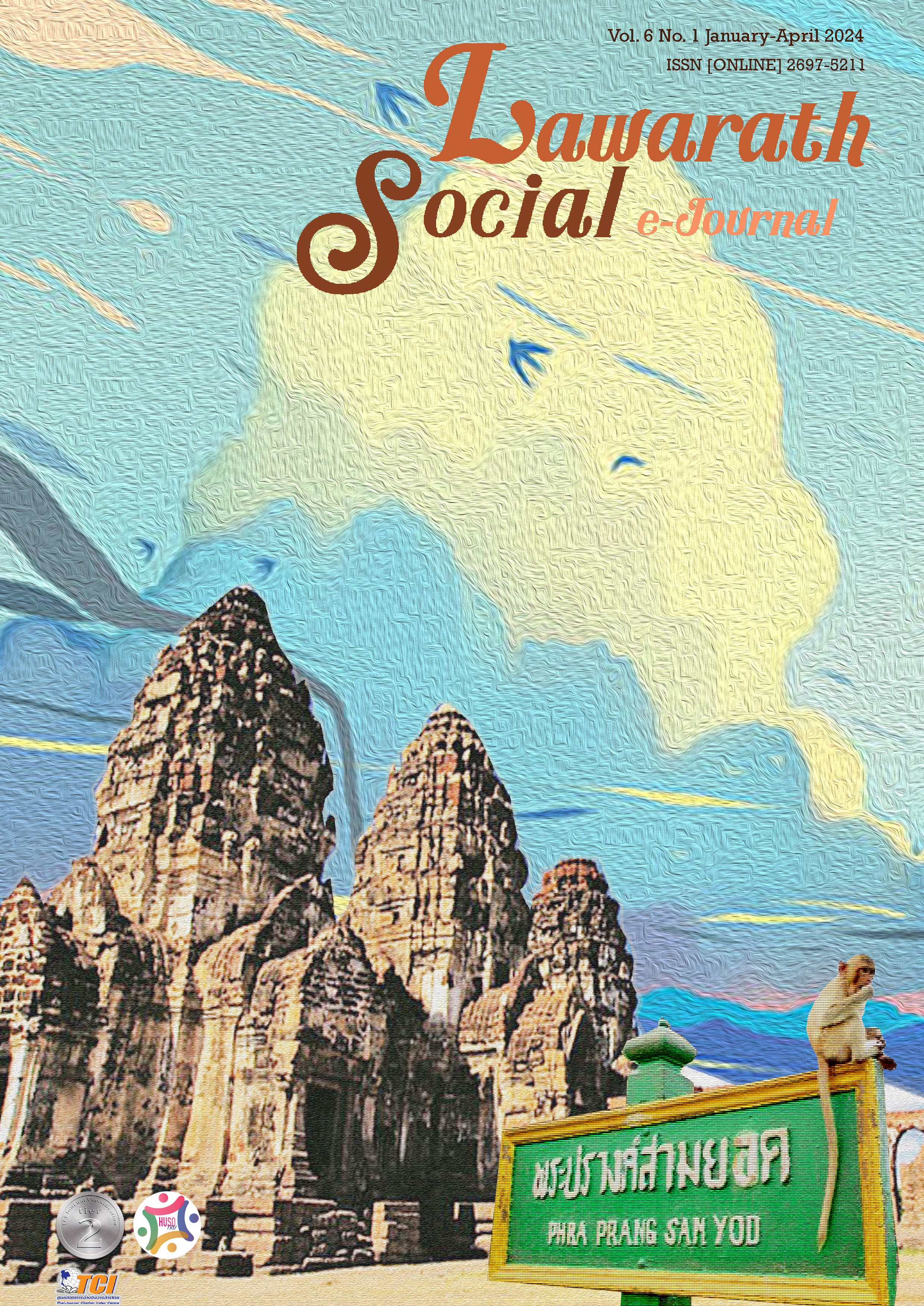The Distribution of Meaning Items of the Mandarin Verb "Mái" (to Bury)
Keywords:
Mandarin, Verb, Distribution of Meaning Items, "Mái" (to Bury)Abstract
This study aims to investigate the classification and distribution of meaning items of Mandarin burial verbs in Chinese learner's dictionaries. The verb "mái" (to bury) is taken as a representative and analyzed through a combination of corpus technology, argument structure, and qualia structure theory. Through the analysis and classification of objects involved, including the subject, object, location, and instrument, four main senses of the verb are identified: 1. interring a dead body in the ground; 2. covering something with soil, sand, snow, debris, etc.; 3. concealing something from discovery or manifestation; and 4. lowering one's head, face, or eyes. Image schemas are created for each meaning items of the verb based on typical objects and semantic features, along with collocations of typical objects to facilitate second language learners of Chinese in understanding and mastering the meanings. Finally, suggestions for improving the classification and description of meaning items in Chinese learner's dictionaries are proposed.
Downloads
References
Beijing Language and Culture University HSK Test Center. (2000). A Dictionary of Chinese Usage: 8000 Words. Beijing: Author.
Commercial Press Dictionary Research Centre. (2010). Xiandai Hanyu Xuexi Cidian [A Learner's Dictionary of Modern Chinese]. Beijing: The Commercial Press.
Duan, Y. (2013). Shuowen Jiezi Zhu [Annotations on the Explanations of Simple and Compound Characters]. Beijing: Zhonghua Book Company.
Fillmore, C. (1968). The Case for Case. In Bach, E. & Harms, R. T. (Eds.), Universals in Linguistic Theory. New York: Holt, Rinehart and Winston.
Gu, Y. (2008). Hanzi Yuanliu Zidian [An Etymological Dictionary of Chinese Characters]. Beijing: Language & Culture Press.
Lexicography Department of the Institute of Linguistics, Chinese Academy of Social Sciences. (2016). Xiandai Hanyu Cidian = A Dictionary of Current Chinese (7th ed.). Beijing: The Commercial Press.
Li, Q. (2015, March - April). Combination of the Mandarin Verb ‘Dú’ (读) with Nouns Form the Perspective of the Generative Lexicon Theory. Journal of Yunnan Normal University (Teaching & Studying Chinese as a Foreign Language Edition), 31(2), 69-80.
Li, S. (2016, September - October). The Distribution of Meaning Items of “Huang” in Modern Chinese Based on Corpus. Journal of Ocean University of China (Social Sciences), 14(6), 103-109.
Li, X. (2014). Xiandai Hanyu Guifan Cidian = A Standard Chinese Dictionary of Contemporary Words (3rd ed.). Beijing: Foreign Language Teaching and Research Press.
Liu, X. (2016). Shiming: Fu Yin Xu, Bihua Suoyin [Explanation of Names: With Phonetic Index and Stroke Order Index]. Beijing: Zhonghua Book Company.
Lu, J., &Lü, W. (2006). The Commercial Press Learner’s Dictionary of Contemporary Chinese. Beijing: The Commercial Press.
Lü, Y. (2008). Study on the Chinese Verb that Indicate the Motion of Hands Based on Corpus (Doctoral Dissertation). Shandong University.
National Language Commission of China. (2021). International Chinese Language Education Chinese Proficiency Level Standards [GF0025-2021]. Beijing: Language and Culture Press.
Xu, S., Xu, X., &Wang, H. (2005). Xu Shen’s Etymological Dictionary. Beijing: Social Sciences Academic Press.
Xu, X. (2006). Research on the Meaning of the Verb Is Not Self-sufficient Master’s thesis, Ludong University.
Yuan, Y. (2002, July-September). The Hierarchical Relationship and Semantic Features of Argument Roles. [J]. Chinese Teaching in the World, 15(3), 10-22.
Yuan, Y. (2007, July-August). The Fine-grained Level of Semantic Roles and Its Application in Information Processing. Journal of Chinese Information Processing, 17(4), 10-20.
Yuan, Y. (2010). The Study of on Chinese Valence Grammar. Beijing: The Commercial Press.
Zhan, W., Guo, R., &Chen, Y. (2003). The CCL Corpus of Chinese Texts: 700 million Chinese Characters, the 11th Century B.C. - present. Available online at the website of Center for Chinese Linguistics (abbreviated as CCL) of Peking University, Retrieved December 19, 2022, from http://ccl.pku.edu.cn:8080/ccl_corpus.
Zhang, B., &Cui, X. (2021). Global Chinese Interlanguage Corpus [Interlanguage Corpus]. Retrieved December 23, 2022, from http://qqk.blcu.edu.cn.
Zhang, Z. (2020). Dangdai Hanyu Xuexi Cidian [A Learner's Dictionary of Contemporary Chinese]. Beijing: The Commercial Press.
Zheng, D. (2005, October-December). The Urgent Need for the Construction of a Dictionary for Learning Chinese as a Foreign Language: A Recommendation for the Proceedings of the International Symposium on Lexicography for Learning Chinese as a Foreign Language. Lexicographical Studies, 26(3), 161-167.
Downloads
Published
How to Cite
Issue
Section
License

This work is licensed under a Creative Commons Attribution-NonCommercial-NoDerivatives 4.0 International License.



